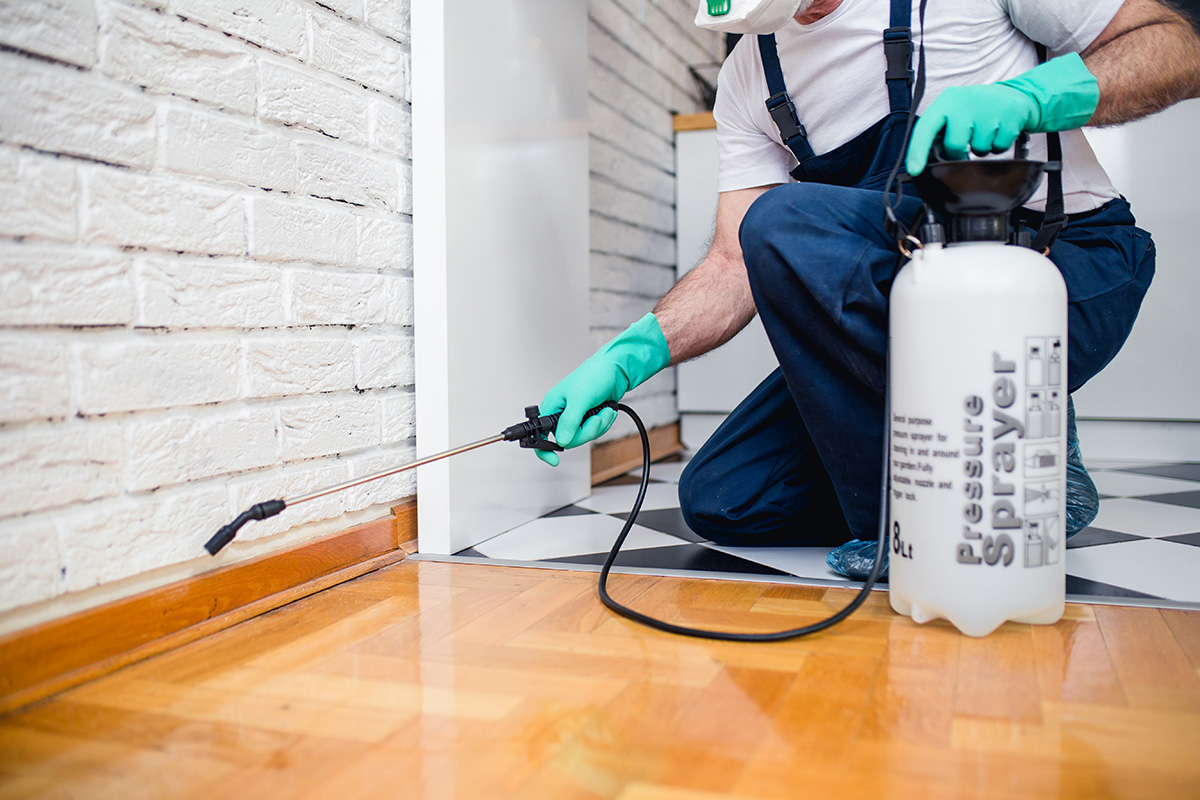Bed Pest Therapy Malfunction: Contrasting Chemical Vs. Non-Chemical Solutions
In the realm of bug control, particularly when dealing with the consistent concern of bed pests, the selection in between chemical and non-chemical treatment services can be a crucial one. Both techniques offer distinct benefits and drawbacks, affecting aspects such as performance, safety factors to consider, and total cost. By analyzing the nuanced information of each approach, a clearer understanding of which course to seek in resolving a bed pest invasion can be achieved.
Effectiveness of Chemical Treatments
Chemical therapies for bed pest invasions have been extensively recognized for their powerful and fast effectiveness in removing these insects. When considering the performance of chemical therapies, it is vital to understand that they can give a complete and fast remedy to a bed pest issue.
Moreover, chemical therapies have the advantage of offering residual results, implying that they can remain to eliminate bed pests even after the first application. This residual action is particularly useful in combating any type of potential re-infestations. Additionally, the quick action of chemical treatments can bring relief to individuals facing serious bed insect problems, permitting them to restore control of their space quickly.
Safety Worries With Chemical Solutions
One critical facet that calls for careful consideration when making use of chemical options for bed insect treatment is making sure the safety of residents and the environment. While chemical treatments can be reliable in eliminating bed bugs, they may posture dangers if not taken care of appropriately. One of the main safety interest in chemical remedies is the prospective injury they can cause to human wellness. Exposure to certain chemicals used in bed bug treatments can cause respiratory system problems, skin irritability, or other damaging responses, particularly in individuals with pre-existing problems or level of sensitivities. Additionally, inappropriate application or dosage of chemical pesticides can lead to poisonous deposits sticking around in the cured location, positioning long-term health and wellness risks to occupants.
Additionally, the environmental influence of chemical services is another substantial factor to consider. Some chemicals used in bed insect therapies might be dangerous to useful pests, wild animals, and communities if they seep into the soil or water supply. It is essential to use chemical therapies sensibly, complying with safety and security guidelines, and taking into consideration much less hazardous options to mitigate these risks and guarantee the effective and safe monitoring of bed bug problems.
Benefits of Non-Chemical Methods
Taking into consideration the prospective security issues and environmental impact associated with chemical remedies for bed insect therapy, discovering non-chemical strategies provides a promising option with numerous distinct benefits. Non-chemical techniques use a much safer option for families, especially those with individuals, animals, or kids sensitive to harsh chemicals. These approaches remove the risks of exposure to toxic substances, reducing the possibility for unfavorable wellness impacts. Moreover, non-chemical treatments are eco pleasant, as they do not add to air or water air pollution, making them a lasting choice for bug control.
Furthermore, non-chemical remedies can be effective in targeting bed insects, including hard-to-reach locations where chemical therapies might not penetrate - A1 exterminator charlotte nc. Techniques such as warm treatment, vacuuming, vapor cleaning, and bed mattress coverings provide comprehensive eradication without the use of damaging chemicals.
Limitations of Non-Chemical Treatments

In addition, non-chemical treatments commonly require numerous applications to achieve successful clark pest control elimination. This can be taxing and might not always guarantee total removal of all bed pests and their eggs, particularly in hard-to-reach or concealed locations.
Furthermore, the success of non-chemical therapies heavily relies on appropriate execution and thoroughness, which can be testing for people without expert competence. Inadequate application of non-chemical techniques might lead to incomplete obliteration, resulting in relentless infestations and the requirement for additional treatments.
Therefore, while non-chemical therapies have their advantages, it is vital to acknowledge these limitations and consider them when figuring out one of the most efficient method for handling bed pest invasions.
Price Comparison: Chemical Vs. Non-Chemical Options
Given the limitations connected with non-chemical treatments, a crucial aspect to examine in the context of bed bug management is the price contrast between chemical and non-chemical alternatives. Chemical treatments normally entail the application of insecticides by experts, which can vary from $250 to $900 per area, depending upon the severity of the problem and the dimension of the area to be treated. In contrast, non-chemical therapies like heat therapy or heavy steam can be a lot more costly, with prices varying from $1,000 to $6,000 for an entire home. While the preliminary cost of chemical therapies may seem lower, numerous treatments might be needed to completely remove the infestation, potentially raising the total price. On the various other hand, non-chemical options might provide an extra environment-friendly and sustainable remedy, although they can be cost-prohibitive for some people. Ultimately, when taking into consideration the expense of bed insect therapy options, it is crucial to evaluate the ahead of time expenses Your Domain Name versus the efficiency and long-term sustainability of the picked technique.
Conclusion

Taking into consideration the possible safety and security problems and ecological effect connected with chemical solutions for bed insect therapy, exploring non-chemical approaches provides an appealing option with a number of distinct advantages.Provided the restrictions associated with non-chemical therapies, a necessary facet to review in the context of bed insect administration is the price comparison in between chemical and non-chemical choices. In contrast, non-chemical therapies like heat therapy or heavy steam can be a lot more expensive, with expenses varying from $1,000 to $6,000 for an entire home. While the first expense of chemical therapies might appear lower, several therapies might be needed to totally get rid of the infestation, potentially increasing the total cost.In conclusion, when contrasting chemical and non-chemical bed insect treatment options, it is essential to think about performance, safety, benefits, limitations, and cost.